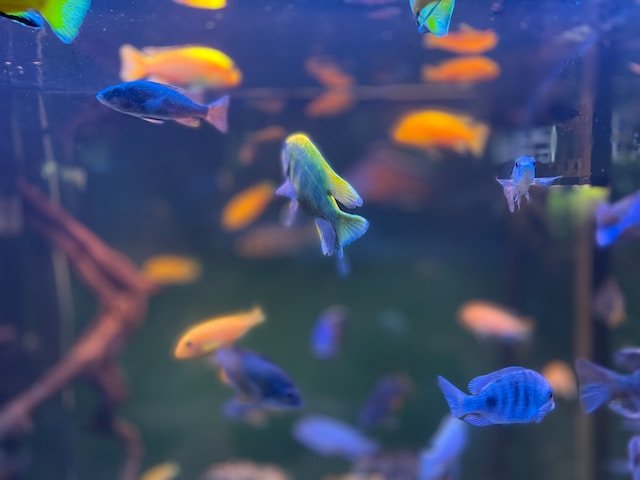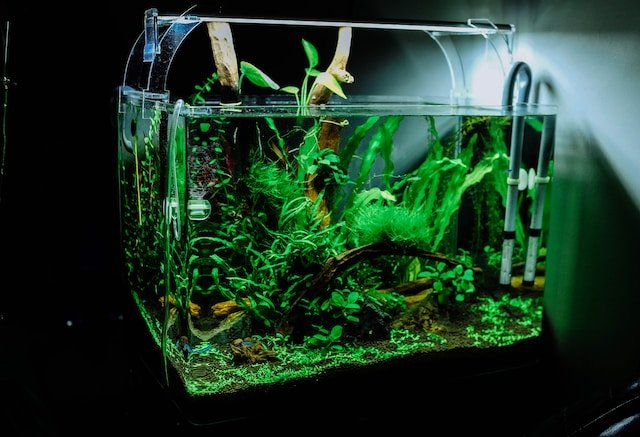Aquarium Water Chemistry: Understanding pH, Ammonia, and Nitrite
Owning an aquarium with various species of beautiful fish can be exciting. Getting the opportunity to explore the deep blue sea from the comfort of your home is exhilarating. That said, one essential part of owning an aquarium is understanding its water chemistry.
This article contains all you need to know about the fundamentals of water chemistry in your aquarium, especially pH, ammonia, and nitrite. Understanding these concepts is essential for the well-being of your pets. Read on to find out more.
Understanding pH
The first thing you need to understand is pH. It is a measure of the acidity or alkalinity of your aquarium water. Using the pH scale, 7.0 is neutral, anything above 7.0 is alkaline, and anything below 7.0 is acidic.
Effects of pH on Your Aquarium
The appropriate pH level depends on the requirement of your fish. For example, following the Black Skirt Tetra care guide, this specie of fish requires water with pH levels ranging from 6.5 to 7.5.
If the pH level goes beyond this range, your fish may experience sickness, stress, or death.
Nevertheless, you do not have to worry about that because you can use a pH test kit to regularly check your aquarium water and ensure it is in the optimal range.
How to Deal WIth pH Imbalance
After testing your aquarium water and realizing that its pH level is off, you can take measures to adjust it.
You can visit a local pet store and find a plethora of products to alter the pH of the water. However, keep in mind that you should only adjust the pH level gradually because if you do it suddenly, it can be quite harmful to your fish.
Also, it is important to note that your aquarium's pH may drop as time goes on due to organic material breakdown. You can prevent this from happening by partially changing the water in the tank from time to time. Another way to increase pH is to add baking soda to your aquarium.
Understanding Ammonia and Nitrite
Ammonia and nitrite are both waste products of organic matter in an aquarium. Unfortunately, these waste products are, to some extent, toxic to the fish and plants in your aquarium.
Effects of Ammonia
High ammonia levels can lead to gill damage, which leads to lethargy, loss of appetite, and difficulty in breathing. It can also cause severe damage to the intestine, fins, and skin.
If the exposure becomes too much, it can lead to immune suppression, kidney damage, decreased growth, and deterred nervous system.
Here are some signs of ammonia poisoning to look out for:
- Erratic swimming patterns
- Bloody areas in and on the body
- Poor respiration
- Death
Here are some signs of ammonia poisoning to look out for:
Effects of Nitrite
High nitrite levels lead to nitrite poisoning, causing your fish to become weak and find it hard to breathe.
This is because the nitrite attaches to the red blood cells in these fish and inhibits them from carrying oxygen efficiently. Furthermore, long exposure to nitrite can cause your fish to become anemic.
Some signs that show your fish might be experiencing nitrite poisoning include:
- Chocolate-brown blood (usually seen in the gills)
- Reaching for the surface or water inflow
The best way to deal with ammonia and nitrite is to install a filter. That said, it is recommended that you set up a biological filtration system.
This filtration system will be able to convert these substances into nitrate (less harmful) and it can occur naturally in any aquarium after a few months of operations.
Setting up a biological filtration system takes patience and dedication because you have to test water quality regularly in the beginning.
Whenever you notice that ammonia has increased, you may need to change the water until you can figure out what caused the increase in ammonia levels.
The same applies to increased nitrite levels. However, you might be able to solve a spike in nitrate by adding salt (sodium chloride) to the water tank. The appropriate ratio of chloride to nitrite is 6:1. In addition, chloride can help to prevent nitrite from entering the bloodstreams of your fish.
Newer aquarium filters have a special area where bacteria can grow efficiently. Granted, bacteria can grow on rocks or in traditional filters, but these newer filters allow for a large colony, meaning they can remove ammonia and nitrite better.
That being said, even an efficient biological filter can be overwhelmed if your tank becomes too crowded or there's excess waste due to overfeeding.
If this happens, you may notice that the aquarium water becomes cloudy and toxic. Hence, it is essential that you use a test kit to monitor ammonia and nitrite levels and ensure your filter is working optimally.
Ensure you have a decent population of aquatic plants because they can help with nitrate removal. Furthermore, it can take months for your aquarium to create a decent population of beneficial nitrifying bacteria, so it is vital that you let the aquarium establish this population before adding your fish. You can add a few hardy fish in the beginning and add more over time so that you do not overwhelm the biological filters.
Importance of Regular Testing and Maintenance
No matter how experienced you are with handling aquariums, you are bound to come into some unexpected events. This is why regularly testing the pH, ammonia, and nitrite levels of your aquarium water is in your best interest. This way, you can anticipate any spikes and react accordingly.
Routine maintenance of the water in your tank is just as important as regular testing. This includes taking out gravel, monitoring the filtration system, and partial water changes. By doing all this, you can maintain the harmony and balance of your aquarium.
Conclusion
When running an aquarium, it is crucial to understand and maintain water chemistry. By mastering the roles of pH, ammonia, and nitrite, you make sure your aquatic habitat is healthy, vibrant, and conducive for your fish.
Keep in mind that various fish species have different requirements, so make sure to research your fish and tailor your tank to them.


